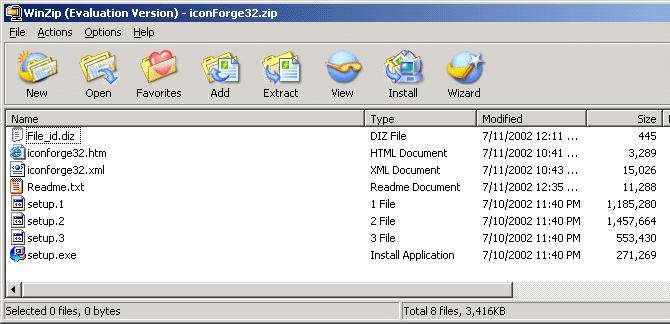-->


This article describes the command-line switches that are supported by a software installation package, an update package, or a hotfix package that's created by using Microsoft Self-Extractor.
Open 7-Zip and browse to the folder containing the exe. Right click on the exe file and click 'Open Inside'. Double click a folder inside if needed to get to the files. Select the files you need by clicking on them while holding down the ctrl key. Right click on the selected files and click 'Copy To'. Type a path or click on the. Name the file 'filename.exe' and click Save. Select 'Create a new Self Extraction Directive file' and click Next. Select Extract files only and click Next. Name and configure the file. Add the.exe file you created. Follow the on-screen instructions to create the package.
Original product version: Windows 10 - all editions
Original KB number: 912203

Summary
A Self-Extractor package is a self-extracting executable (.exe) file. You can run the .exe file to install the package. To run the .exe file, use one of the following methods:
Extract Exe File
- Double-click the .exe file.
- Run the .exe file from a command line.
Run Self-Extractor packages from a command line
If you run the .exe file from a command line, several switches may be available for use in the package.
Note
Not all switches may be available in all packages.
To determine which switches are available in the package, use one of the following Help switches when you run the package at a command line:
/?/h/help

Extract Exe Files On Mac
The following table lists the command-line switches that are supported by Microsoft Self-Extractor.
Extract Exe File Into Microsoft Visual Video
| Switch | Description |
|---|---|
/extract:[path] | Extracts the content of the package to the path folder. If a path is not specified, then a Browse dialog box appears. |
/log:[path to log file] | Enables verbose logging for the update installation. In addition to the path information, the file name must be included. Because the command does not create a folder that does not exist, only an existing folder name should be provided. In addition to the file name that is specified, a separate log file will be created for each .msi file that is run. |
/lang:lcid | Sets the user interface to the specified locale when multiple locales are available in the package. |
/quiet | Runs the package in silent mode. |
/passive | Runs the update without any interaction from the user. |
/norestart | Prevents prompting of the user when a restart of the computer is needed. |
/forcerestart | Forces a restart of the computer as soon as the update is finished. |
/?, /h, /help | Shows this help message. |